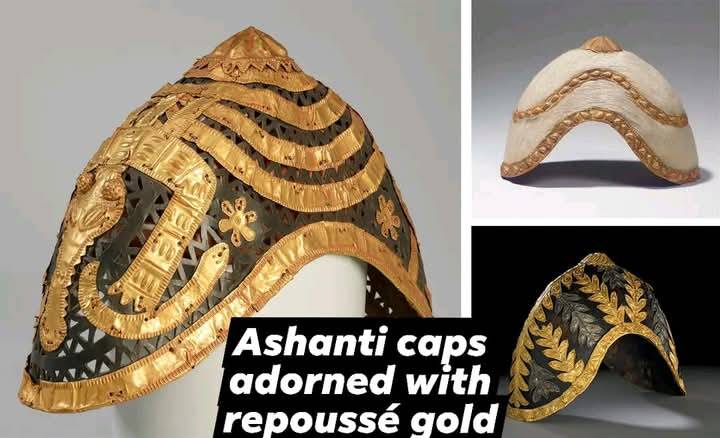The Ashanti krobonkye, a traditional skull cap dating back to the 19th century, has been recognized as one of Ghana’s most distinctive ceremonial artifacts, embodying the artistry and authority of the Akan-speaking peoples.
Crafted primarily from worked leather or antelope hide, krobonkye caps are kidney-shaped and often embellished with fine repoussé gold sheet appliqués. These ornate details underscored the elevated social standing of their wearers, marking the caps as more than mere attire they were powerful symbols of prestige.
Historically, krobonkye were worn by state sword-bearers and elite gun-bearers, prominent figures in royal processions and public ceremonies across the Ashanti Kingdom. Their role not only highlighted the wearer’s proximity to power but also reinforced the cultural significance of regalia in Ghanaian statecraft.
Today, krobonkye stand as an enduring testament to the Ashanti’s rich cultural traditions, offering both scholars and artisans insight into Ghana’s regal past and the craftsmanship that continues to inspire generations.


